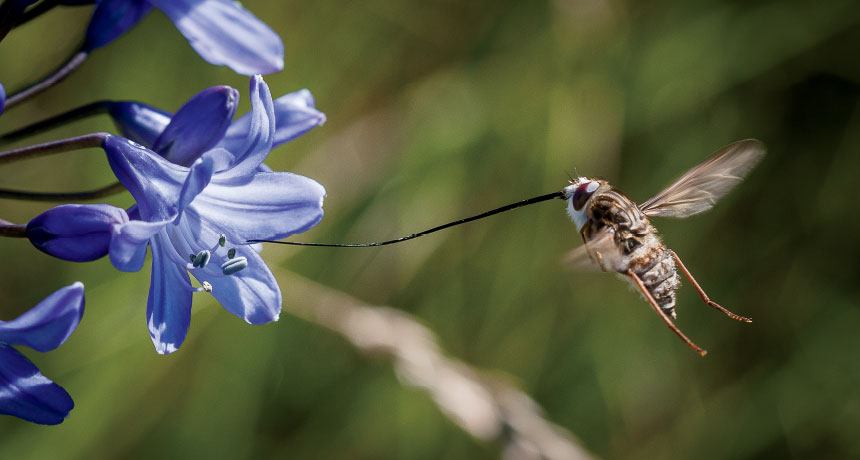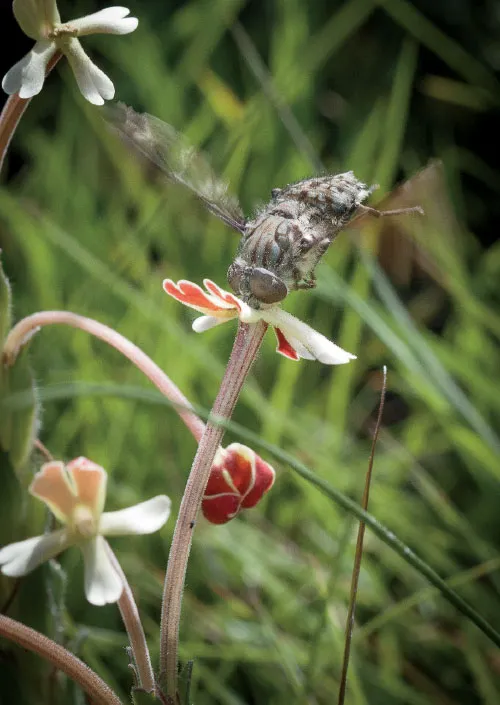Long-tongued fly sips from afar
Insect specialized for digging deep into flowers can go shallow on occasion

LONG-DISTANCE DRINK Prosoeca ganglbaueri, one of southern Africa’s long-tongued flies, drinks through mouthparts longer than its own body.
Michael Whitehead








